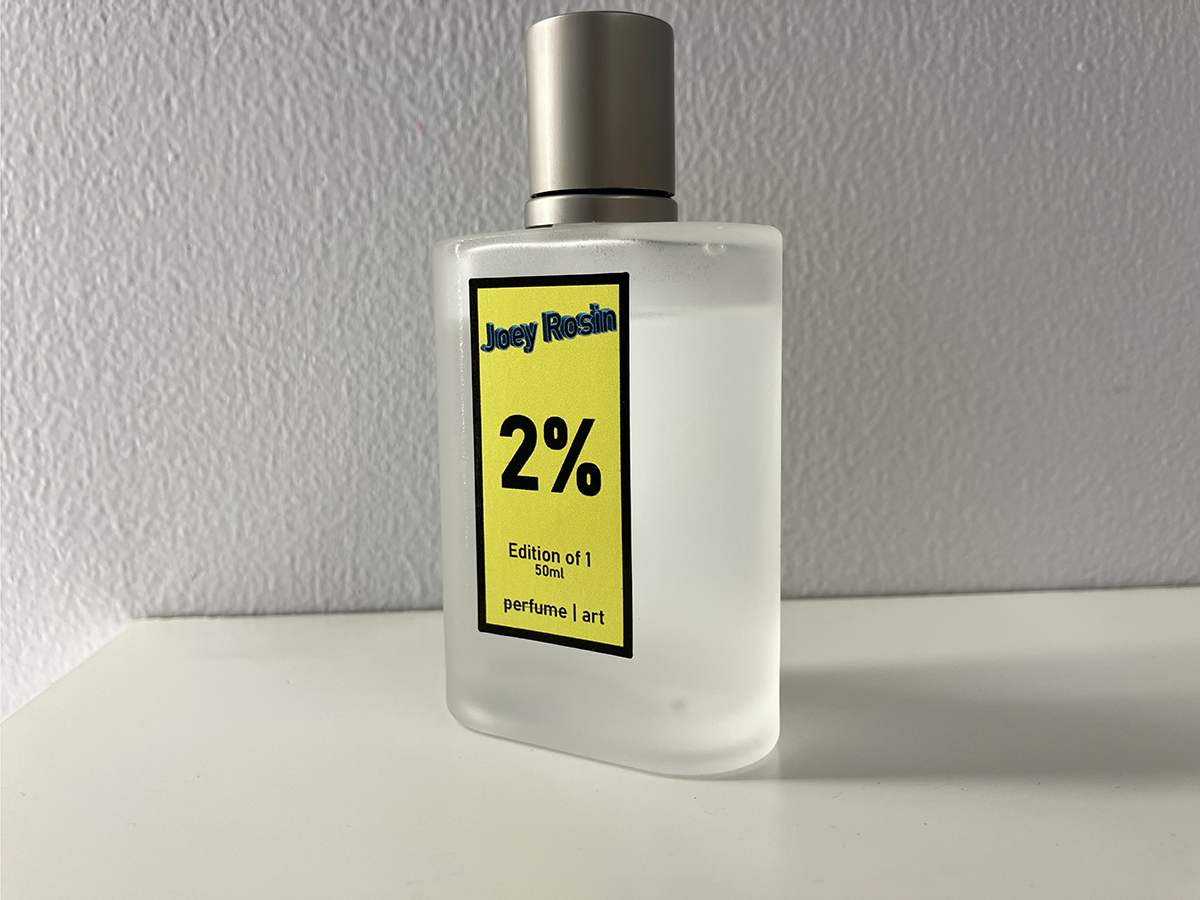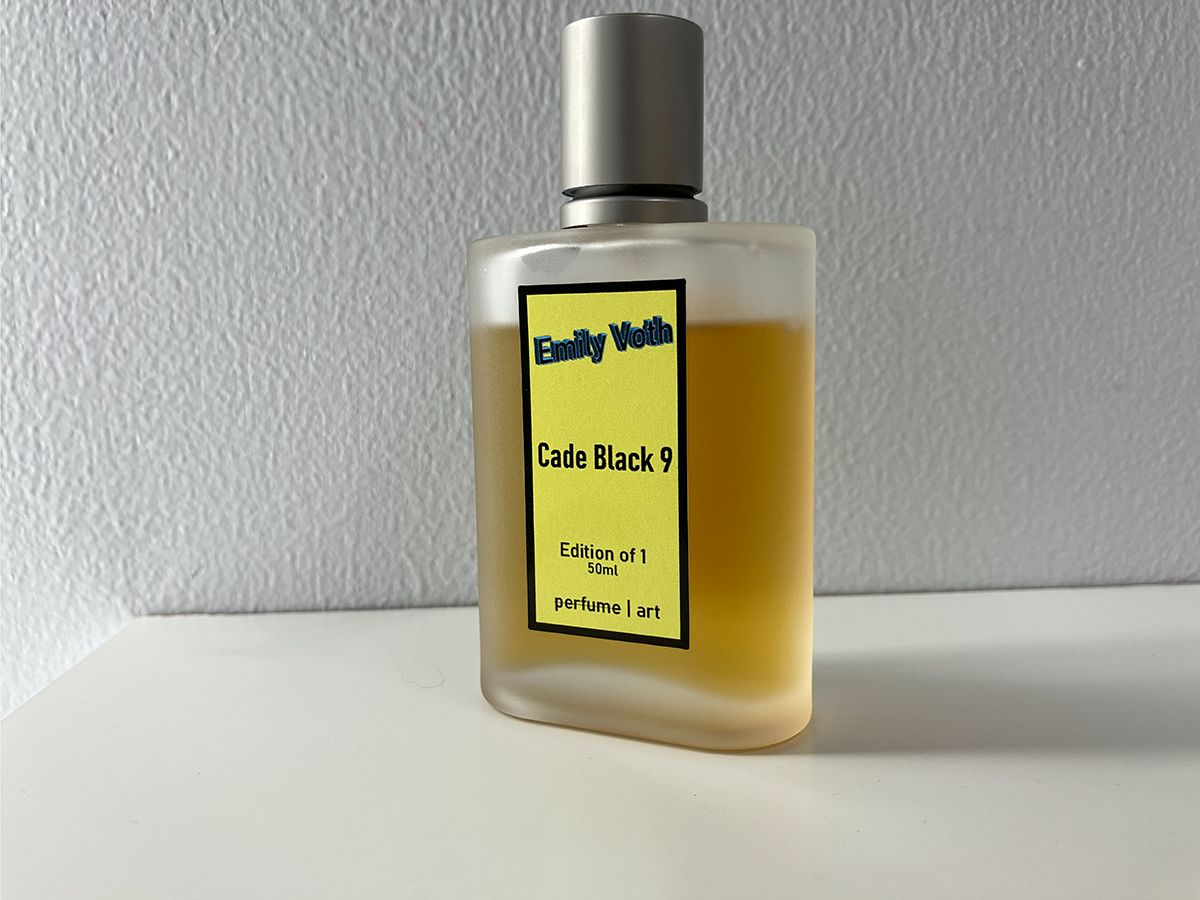Minimal Scents
Thursday, June 15 - Saturday, August 5, 2023
Olfactory Art Keller is honored to present Minimal Scents, a survey of works that engage with minimalism by some of the most innovative contemporary scent creators. Through decades of exploration, visual art and music have arrived at something close to a consensus about how to practice minimalism. In minimal art the spatial complexity, the unruly arrangement of objects in space that is characteristic for visual experiences, is drastically reduced, replaced by basic shapes and orderly arrangements. In minimal music the temporal structure is radically simplified, resulting in repetitive patterns and steady drones.
Scent creation, on the other hand, is an emerging artform with no agreed upon concept of minimalism. Minimal Scents showcases twenty different approaches to the seemingly intractable problem of stripping the adornments off smells, which are phenomenologically already so sparse that they have been called "single unitary experiences" (R.J. Stevenson) and "states of consciousness, having neither geometry nor articulate individuation" (W.G. Lycan). The works on display have little in common, with some aiming for conceptual minimalism and others for minimalist phenomenology.
Conceptual Minimalism
Several works playfully engage with perceptual expectations, creating conceptual scents that are, to resort to a cliche, about perception itself. Jonah Simonak's "Unscented Candle" is the experience of a scented candle, aromatically stripped of the typical signifiers that make candles “scented”. Aliaksandra Basalayeva goes further still and strips a scent of its definitive form, giving the smeller the freedom to create their own experience with her "Chameleon". Hannah Marie Marcus and Margaux Le Paih Guerin both created works that reveal and pervert the idea of figure-ground-segregation in olfaction. Marcus' "Ambient Scent 25A/25B" mimics the ambient smell of its environment, the Olfactory Art Keller exhibition space, thereby retreating into the olfactory background, like a white canvas on a white wall. Le Paih Guerin's "Olfa Meta 3" similarly turns the background into the figure, turning the traditional accord structure of perfumes upside-down.
Limited Palettes
Limiting materials is another way to approach minimalism conceptually. The building blocks that scent creators work with are odor molecules and while most scents have rather complicated recipes, minimalist scent pieces may consist of as little as two different odor molecules, like Maxwell Williams' "Tor", which is composed of methyl benzoate and piperonal, two molecules commonly used to train drug-sniffing dogs to detect cocaine and MDMA respectively. agustine zegers' "plasti-pileus", part of their continued engagement with speculative scenarios of climate disasters in olfactive form, consists of three materials, as does Dawn Spencer Hurwitz' "Green Pillar", a hard-edged tactile olfactory experience, like a solid wall of pure translucent green. David Bernstein used a deliberately restrictive palette of found-source materials for his "salad", a blend of three single-origin olive oils. George Tedder's "Unfrilled" uses few materials of extreme strength to produce a scent that is strong and long-lasting even in small amounts at high dilution.
Elemental Smells
Conceptual approaches to olfactory minimalism can also find their starting point in ontology. According to the ancient Greek, the properties of all matter can be explained in terms of the simpler elements it is made of. The basic elements are earth (warm/wet), water (cold/wet), air (cold/dry), and fire (warm/dry). With smell being one of the properties of matter, the most elemental smells are the smells of these basic elements. In Minimal Scents, earth is represented by Stefan Kehl's "The Soil", an experiment in reduction that points clearly and directly to the essential and by Shahira Hammad's "ARD", a slow descent into the earth. Ksandra Osinina's "Water" is the perfumed image of the wet and cold element, while Adam Forziati's "I Am From It" combines the two cold elements, water and air, imagining them in their purest form. Emily Voth's "Cade Black 9" distills fire’s essence and inimitable power into a few select ingredients.
Essences
Perceptual minimalism in olfaction aims to reduce olfactory complexity to the scent of one thing and one thing only. A volatile mark with no adornments, stripped to its essence. For Minimal Scents, Eli Diez' uncovered the essence of the most beautiful flowers in their most rotten appearance in their "putre-factio". Joey Rosin's "2%" recreates the perception of a cold glass of milk on a hot summer day, Tennessee MacDougall's "Tar Snakes" the scent of hot tar being poured into the holes and cracks of a damaged road. David Falsberg's "Current Wave" is an animalic soliflore with aged gray Irish ambergris as the flower of the hour that explores the material’s unchained essence, woodsy notes, and molecular headspace surround. Jordan Robin’s "Idem Ink" enhances oakmoss without stripping it of its raw power while "Tears of the Moon Princess" by Michael Nordstrand expresses and exalts the essence of the flowers of the Osmanthus tree.
Together, the twenty works on display in Minimal Scents cover a wide range of approaches to minimalism. No agreement can or should be expected whether a given work is minimalist or not. The lack of clarity in this young art form encourages experimentation that reveals the multifaceted nature of minimalism.



